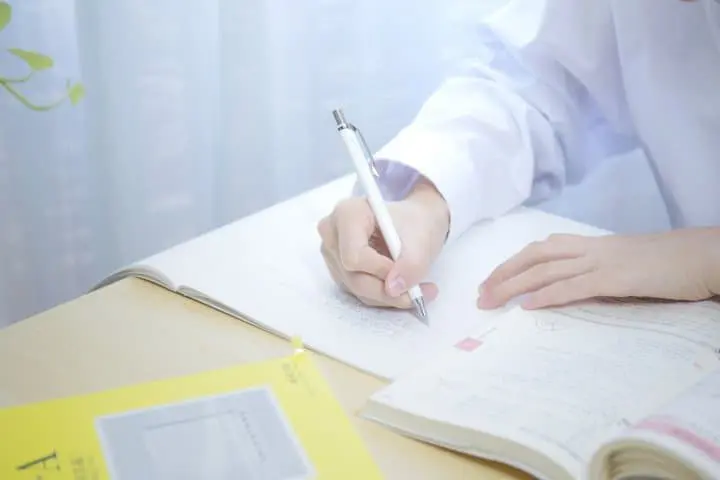Learn Japanese At Home! 5 Recommended Books And Study Tools

Studying Japanese but don't know where to begin or how to improve your skills? This article introduces five suggested textbooks, workbooks, and study materials highly recommended for solo learners. Begin your learning journey at home!
Suggested Self-Study Books and Tools For Learning Japanese
Whether you are casually thinking about starting Japanese learning or want to review your language skills, studying by yourself is an option you can do in the comfort of your own home. Japanese is a challenging language to master by yourself, but the textbooks and study books below are ideal for beginners, covering conversation, grammar, reading, and listening skills, and are available for purchase online. All have been tested by Japanese language learners and are popular.
Continue reading below to learn what books and materials you need to get started in studying Japanese for use during a future trip, enjoying Japanese anime or comics, or just to improve your skills.
1. Studying For a Trip: Survival Japanese Conversation for Beginners

Ideal for travelers, "NIHONGO FUN & EASY Survival Japanese Conversation for Beginners" is a lightweight book that is a treasure trove of conversation practice and practical language skills. Even if you don't know any Japanese to begin with, the lessons and practice in this book will allow you to learn, memorize, and understand how to use basic phrases useful for a trip and everyday situations in Japan.
Learning the language for travel means your entire trip will go by smoother, from navigating from one destination to the next, to making friends with locals on your trip. This study book is a valuable tool to make your travel even more special.
See Details and Purchase: Amazon Japan, Amazon United States (Paperback only)
2. Learning the Basics: Japanese for Busy People

For those with a full schedule and less time to study, "Japanese for Busy People" is a series of beginner-friendly books that cover grammar and sentence structure, vocabulary, and practical conversation practice in a balanced, friendly manner. The books are available in two versions: romaji (the Romanized Japanese alphabet) and kana (Hiragana and Katakana, two phonetic alphabets), so readers can choose the one they are most comfortable with.
The texts are structured into different units dealing with practical themes and professional settings. The scenarios presented in the textbook are suitable for professionals, but students in high school or in college can also benefit, of course.
An audio CD is included with the book, as well as an answer key to the practice questions, making this the ideal book for self-study. Continue studying regularly and practice your conversation skills
See Details and Purchase: Amazon Japan, Amazon United States (Romaji version, paperback only)
3. Read and Write Japanese Hiragana and Katakana - Workbook and Practice Sheets

The first step to reading Japanese is learning the alphabet. There are two phonetic alphabets in Japanese: Hiragana and Katakana. This highly-evaluated workbook and practice sheet set is a valuable tool to study each character, how to pronounce it like a native speaker, and the proper method and order to write it. Use the practice sheets and spaces in the texts provided to build your writing skills.
The worksheets and study book are ideal for self-study and people just beginning to learn the language. Audio files are also included for use for those who buy the book. Results vary by study method, but you can expect to gain a deeper understanding of
See Details and Purchase: Amazon Japan, Amazon United States (Kindle and paperback)
Read also
4. A Dedicated Approach to Studying Japanese: GENKI

A favorite of many beginning Japanese classes outside of Japan is "GENKI: An Integrated Course in Elementary Japanese I." A comprehensive but learner-friendly textbook, the book contains entertaining stories and illustrations throughout, while providing materials on grammar, vocabulary, and conversation suitable even for those studying alone. It covers around level N5 for those planning on taking the Japanese Language Proficiency Test. Make sure you can read and understand Hiragana and Katakana before starting.
There are workbooks and two other GENKI beginner-intermediate level textbooks for those who finish the first book. It is a well-known and highly-regarded series of textbooks among students and teachers, but also suitable for solo learners with dedication. Please note that the answer key for the practice problem scenarios is sold separately.
See Details and Purchase: Amazon Japan, Amazon United States (Paperback and Kindle, depending on the store)
5. For Takers of the JLPT: Japanese So-matome N5

For learners who want to master the basics of Japanese, passing the Japanese Language Proficiency Test (JLPT) is a recommended, easily-recognizable way in and outside of Japan to record your achievement. The "Japanese So-matome" is a series of study books that provide a learner-friendly method of studying for this standardized exam. Available in levels N5 (beginning Japanese) to N1(advanced Japanese), these textbooks are divided by content and level. The N5 book is a comprehensive study method with grammar, vocabulary, Kanji, and reading that will help individual test-takers prepare to pass the test.
What makes this series of texts so ideal is that they all contain adorable illustrations along with the practice problems, making studying fun and efficient. Follow along with the lessons and practice regularly for the best results.
See Details and Purchase: Amazon Japan, Amazon United States (Paperback and Kindle)
FAQ
What is the best book to start learning Japanese?
One highly recommended book for beginners learning Japanese is "Genki: An Integrated Course in Elementary Japanese". This textbook is widely used in university and college Japanese language courses and is favored for its structured approach to teaching grammar, vocabulary, and kanji (Chinese characters used in Japanese writing). "Genki" provides a well-rounded introduction to the Japanese language, with clear explanations, practice exercises, and cultural insights to aid in language learning. It covers essential topics for beginners and progresses gradually to build a solid foundation in Japanese language and communication skills. Supplementing the textbook with audio resources and practice tools can enhance the learning experience for those starting their journey in Japanese language study.
What is the best website to learn Japanese on?
For those seeking to learn Japanese, several top websites offer valuable resources and lessons. Platforms like Duolingo provide interactive language lessons suitable for beginners and intermediate learners, while Tae Kim's Guide to Learning Japanese offers in-depth explanations of grammar and sentence structure. WaniKani specializes in teaching kanji characters and vocabulary efficiently through spaced repetition. NHK World's Easy Japanese website is excellent for basic language learning with beginner-friendly lessons and videos. Japanese Pod 101 offers podcast-style lessons for learners of all levels, covering diverse topics and cultural insights. By leveraging these varied online resources, individuals can enhance their Japanese language skills effectively across different aspects of vocabulary, grammar, kanji, and cultural understanding.
How can I learn Japanese at home by myself?
Self-studying Japanese at home is feasible with a structured approach. Begin by setting clear goals and mastering the basics of greetings, hiragana, and katakana scripts. Progress to learning grammar, vocabulary, and expanding your reading and writing skills. Practice speaking and listening by engaging with Japanese content like podcasts and TV shows, and find language exchange partners for conversation practice. Consistent daily practice is crucial for gradual improvement, utilizing language apps, online resources, and community platforms for support and reinforcement. Tracking progress and setting milestones will help you stay motivated and on track as you navigate the rewarding journey of mastering Japanese independently from the comfort of your home.
What type of notebook should I use to learn Japanese?
Selecting the right type of notebook for learning Japanese depends on your study preferences and methods. Grid or graph paper notebooks are ideal for practicing kanji characters and maintaining consistent handwriting, while mnemonic notebooks can help with vocabulary retention by organizing words, meanings, and memory aids. Blank paper notebooks offer flexibility for various types of notes and illustrations, while a bullet journal format can track study goals and language progress efficiently. A flashcard notebook can aid in memorizing vocabulary and grammar concepts, and digital solutions like note-taking apps or language learning platforms provide versatile options for organizing your Japanese studies. Experimenting with different notebook types to find what best suits your learning style and study needs can enhance your Japanese language learning journey.
How many hours should I study Japanese a day?
When determining how many hours to study Japanese per day, consider the balance between consistency and intensity. Aim for regular, daily practice sessions of at least 30 minutes to an hour, focusing on quality engagement with the material through active learning. Setting realistic goals and breaking them into manageable daily study objectives can help gauge progress and maintain motivation. Adjust your study time based on your learning style, whether it involves short, focused intervals or longer sessions. Incorporating Japanese into daily activities like listening to music or watching shows can supplement formal study sessions. By establishing a study routine that is sustainable and effective for you, consistent practice over time can lead to significant progress in mastering the Japanese language.
What should I study first in Japanese?
When starting to learn Japanese, prioritize foundational elements to establish a strong language base. Begin by mastering hiragana and katakana, the two basic writing systems, to read and write Japanese words. Learn basic vocabulary, greetings, and phrases to build conversational skills, followed by studying fundamental grammar structures like sentence order, verb conjugation, and particles. Practice listening to spoken Japanese for pronunciation and comprehension improvement. Gain insights into Japanese culture, customs, and context to understand the language more deeply. Introduce a few basic kanji characters early on to gradually acclimate to this complex writing system. By focusing on these core elements at the beginning of your Japanese studies, you can lay a solid foundation for further language learning and proficiency.
How many years does it take to become fluent in Japanese?
The time it takes to become fluent in Japanese can vary significantly depending on several factors, including the learner's dedication, study habits, immersion opportunities, and the individual's language learning aptitude. In general, estimates for reaching fluency can range from 1,500 to 2,200 class hours for English speakers to achieve proficiency in languages like Japanese, which are considered more complex for English speakers due to differences in grammar, writing systems, and cultural nuances.
On average, assuming consistent study, daily practice, immersion experiences, and potential formal language training, reaching fluency in Japanese can take anywhere from three to five years. This timeline can vary widely based on individual circumstances and the learner's specific goals for fluency level (e.g., basic conversational fluency versus complete proficiency in reading, writing, and speaking).
It's essential to approach language learning with patience, persistence, and a structured study plan to make steady progress towards fluency in Japanese. Additionally, opportunities for immersion, regular practice with native speakers, and utilizing diverse learning resources can significantly expedite the language acquisition process.
Study Japanese - A Lifelong Pursuit!
Studying something by yourself, especially a language can be very challenging. However, it is possible with hard work and dedication. MATCHA has numerous articles on basic Japanese pronunciation and basic grammar and phrases with accompanying audio files to get started.
Those interested in practicing Japanese in a practical way can use the Easy Japanese version of MATCHA, which contains Hiragana and Katakana readings above Kanji characters, and simple sentences ideal for language learners.
See more: MATCHA Easy Japanese
An awkward Southern California native living in Osaka. Originally came to Japan on the JET Program in Hyogo Prefecture (Kansai) after studying economics in college, and decided to try to stay.
IUC 10-month program graduate. Vegan and interested in all things Japan-related. Left-handed. Very fond of Kansai.






































![[2026] Top 5 Strawberry Picking Spots in Tokushima, Naruto| Farms and Access Guide for January to May](https://resources.matcha-jp.com/resize/720x2000/2025/03/06-227165.webp)


